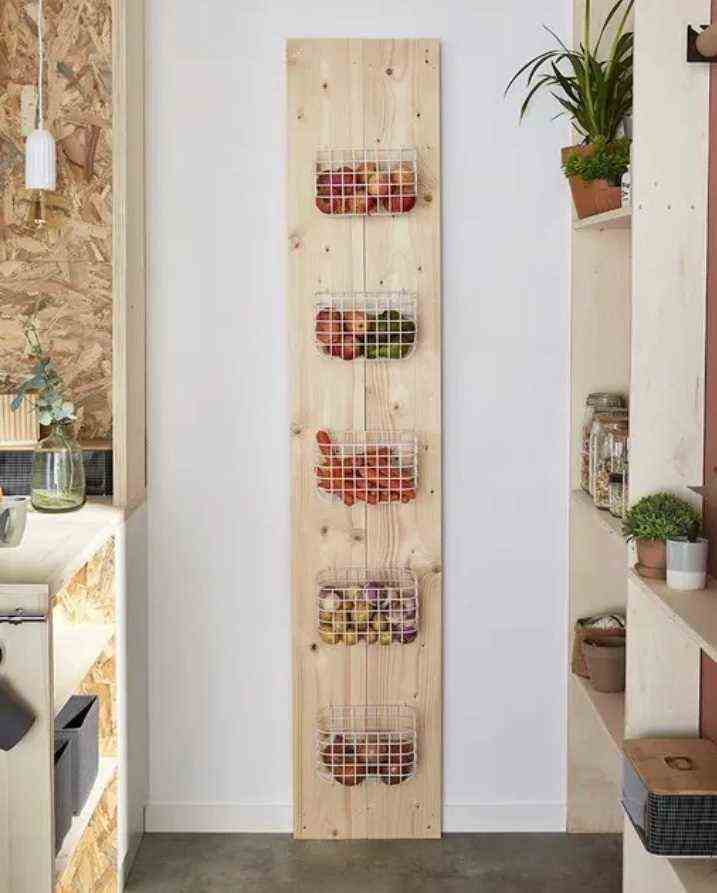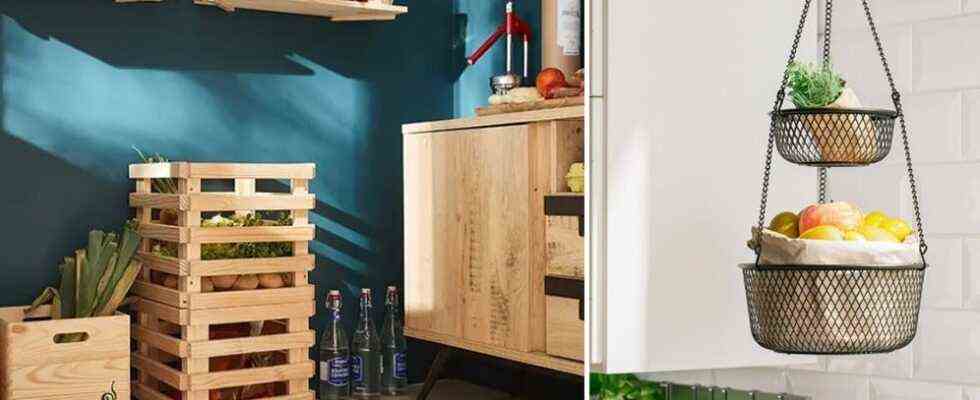Some tips for keeping your fruits and vegetables properly
First of all, be aware that you should avoid storing vegetables that give off strong smells like leeks, onions, etc., near fruits, as these vegetables can alter their taste.
Another element that should not be overlooked is that certain fruits and vegetables give off ethylene. This colorless gas is a plant hormone that allows faster maturation. This ethylene production can continue after picking the fruit or vegetable, it then continues to ripen. This is the case for bananas, avocados, melons, watermelons, etc. On the other hand, other fruits and vegetables, which no longer ripen as soon as they are picked, are sensitive to ethylene. If they are confronted with this gas, they ripen so quickly that they end up rotting, moreover, before arriving there, they lose in quality: some turn yellow quickly (broccoli, spinach, etc.), of others, like carrots, turn bitter. It is therefore important to distinguish them from each other to avoid their premature rotting. To do this, see the table below.
| Ethylene-producing fruits and vegetables | Ethylene sensitive fruits and vegetables |
| Apricots, avocados, bananas, figs, passion fruit, persimmons, kiwis, mangoes, melons, blueberries, nectarines, papayas, watermelons, peaches, pears, apples, plums, tomatoes | Apricots, asparagus, eggplants, avocados, bananas, broccoli, carrots, celery, cabbage, cucumbers, zucchini, endives, strawberries, beans, kiwis, lettuce, mangoes, melons, nectarines, peaches, leeks, pears, peppers, apples, potatoes earth, plums, salads, tomatoes |
On the other hand, our little advice is that if you have an avocado, for example, that is too hard to eat, you just have to place it next to an ethylene-producing fruit or vegetable to quickly see the difference!
A piece of furniture specially dedicated to their storage
A first solution to deal with the problem is to opt for a piece of furniture that allows you to store your fruits and vegetables. It is then possible to separate those which cannot be mixed. The other advantage is that you have them at your fingertips. The trade offers sufficiently openwork furniture to allow air to circulate easily and improve their conservation.
Ikea offers two models of sideboards that will fit easily into your kitchen.
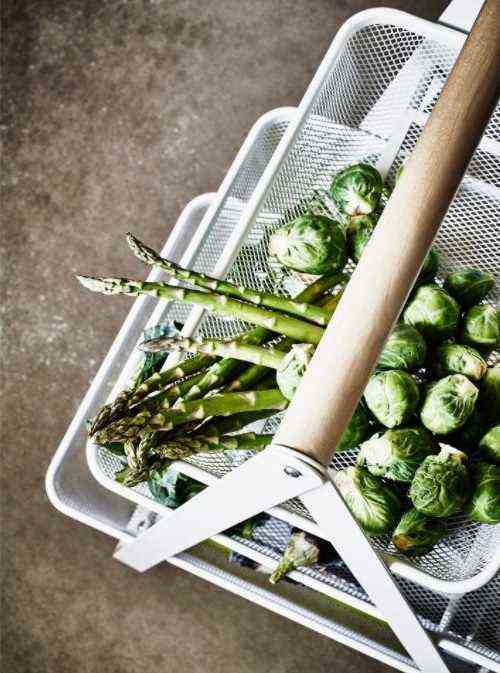
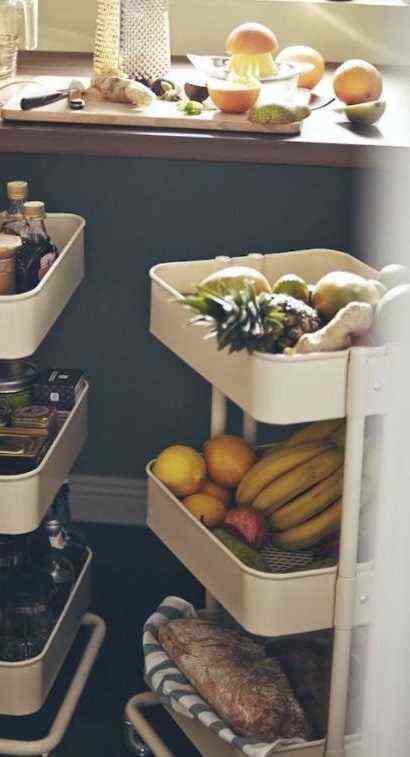
Hanging baskets
Another solution is to opt for hanging baskets. Usually, they come in the form of two or three baskets hung one below the other. They should be securely attached to support the weight of your fruits and vegetables. However, the space occupied is limited. It is preferable to install them low enough to allow easy catching of the fruits or vegetables stored in the highest basket.
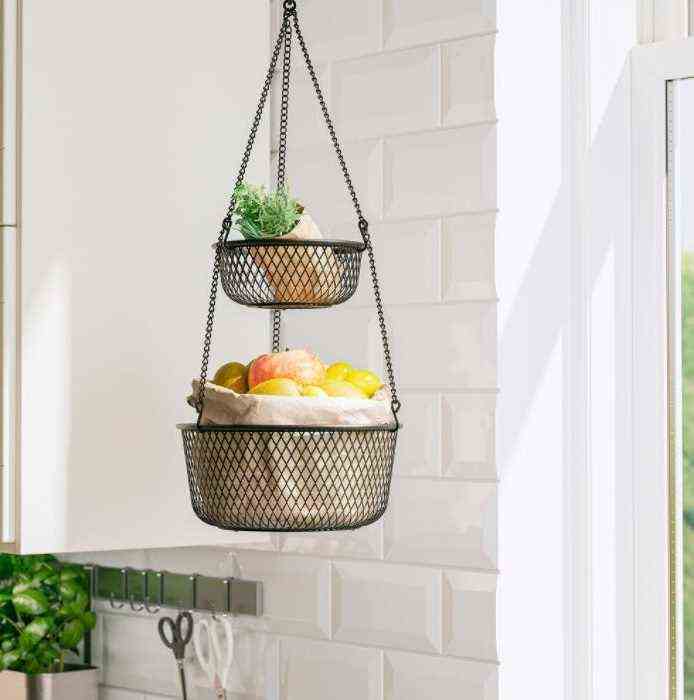
Storage shelves
More stable than hanging baskets, you can give preference to wall shelves. They are to be installed directly on the wall to allow the storage of your fruits and vegetables. In addition to being practical, they will bring a rustic look to your kitchen. On the other hand, they must be installed solidly with fixings adapted to your walls.

Baskets to hang
To store your fruits and vegetables, it is also possible to install baskets on your shelves. They hang with ease and do not require drilling holes in the wall. In openwork metal, they allow fruits and vegetables to breathe. It is possible to install several depending on the space you have available. This way you will be able to separate the fruits and vegetables that need to be set apart.
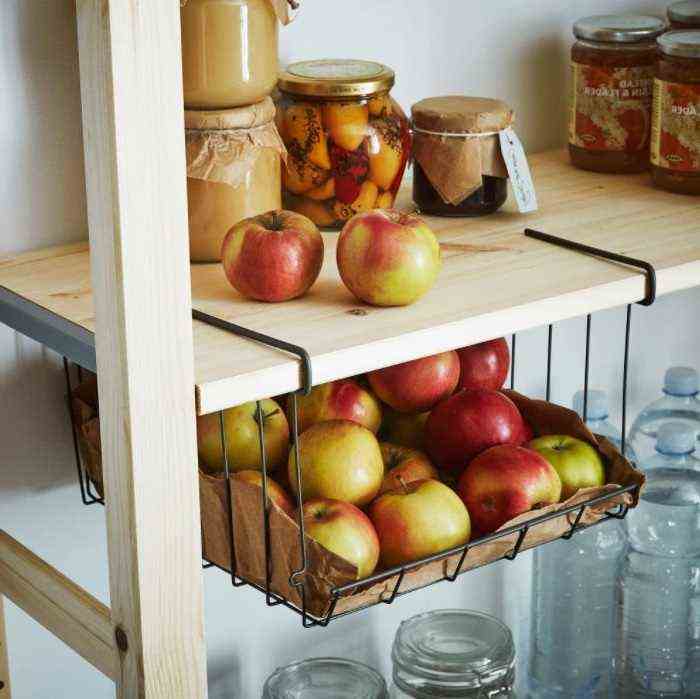
Wooden crates
We love their natural look, but also their practicality. You can store your fruits and vegetables in wooden boxes that you can put directly on the floor or on the shelves of a piece of furniture. The wooden crate is used in all kinds of ways and for good reason, it is very practical. It brings a warm side to the room and allows a good conservation of your fruits and vegetables since the air can circulate.

The pantry drawer
For a perfectly tidy kitchen that stays that way, we can provide a place to store fruits and vegetables directly in a drawer. A place for everything and everything in its place. This way you totally free up the space. Some kitchen designers offer drawers suitable for storing fruit and vegetables.

The vegetable
Another alternative, somewhat in the same vein as the pantry drawer, is the vegetable dish. We then take advantage of several storage spaces called “shelves”. These are covered with a food varnish which allows them to be easily maintained. It is then possible to distribute the fruits and vegetables by level, for example, we can place garlic, onions, shallots, etc. on the upper level to protect them from light. It is also possible to separate fruits and vegetables that should not be mixed.

Wall-mounted fruit basket
If you are a bit of a handyman, you can make it yourself. You won’t need a great level of craftsmanship since it is an achievement suitable for beginners. Leroy Merlin suggests making a wall mounted fruit basket step by step. The support is a wooden board on which metal baskets will be fixed. It can thus be fixed to the wall for a better hold, placed on the ground or on your worktop, if you wish to make it smaller.
